From taking the family for a weekend’s camping, to inviting friends round for an impromptu barbecue, most people agree that nothing beats a Great British Summer when the sun finally decides to come out. And for parents of school-age kids, there’s only one thing better than the start of the summer holidays - that moment when they can legitimately pack their children back off to class.
It’s no surprise that parents look forward to the school bell ringing in September. But, alongside the mums and dads, it can be a time for c-store retailers to celebrate, too. After all, a fresh school term means the return of the lunchtime and after-school trade, plus harried parents in a hurry looking to throw together the contents of their children’s daily lunchboxes.
Get the essentials covered
Sandwiches are the most popular component of any lunchbox, making sliced bread a key lunchbox product. Martin Garlick, category director at Allied Bakeries, says: “Sandwiches are eaten at more than 3.3 million occasions a year and we recommend retailers keep a core range during the morning and evening rush, as consumers top up for the next day’s lunch.”
He advises retailers to cross-merchandise bakery during the back-to-school period. “Bread shoppers spend on average 64% more so keeping sandwich fillers near new bakery items, such as Kingsmill Great White and Kingsmill Bagel Thins, will encourage shoppers to top-up on additional items.”
Steven Butler from Radyr Spar in Cardiff says that he definitely misses the trade from his local school when pupils pack up for summer. “We do a lot of business from the local school,” he says.
“At lunchtime the area just wouldn’t be as busy without the trade it generates.”
He estimates that about 50 of the school’s older kids flock to the shop each lunchtime. And since the area is fairly affluent they often have plenty of money to spend on food and drink to consume outside or to take back to school.
This fact alone makes it worth braving the occasional disruption that the children can bring to usual trading. “To be honest, it’s chaos for half-an-hour - which isn’t always great for our usual customers,” Steven concedes.
“There’s a store just down the road which lets the pupils in two at a time. But we’ve got more staff so we let them in all at once. It can be hard work keeping an eye on them and we have had some shoplifting incidents in the past - especially alcohol. However, we have CCTV in the store so we’ve been able to identify who’s involved and go straight to the police.”
Along with the battle over crowd-control there’s a wider war going on in the nation’s homes - over what kids have for lunch.
School lunches have been a controversial topic ever since Jamie Oliver went on a one-man crusade to improve the nutritional standards of students’ meals back in 2005. Almost a decade later and the effects of his campaign are still being felt, not least in the new government guidelines for schools which recommend that pupils get access to “no less than two portions of fruit and vegetables” per day and oily fish at least once every three weeks.
On the home front the powers that be have tightened up the rules governing how foods are advertised to kids, too, by banning brands marketing products high in fat sugar or salt to children on TV.
Lunchbox snacks for little ones
The under-fives are the target in the latest innovation from Ella’s Kitchen. It has extended its range to feature healthy toddler snacks to tuck away next to the sandwiches and fruit in lunchboxes.
“Snacking is really important for toddlers - they can’t get all of the nutrients and calories they need in just three meals,” says Paul Lindley, founder of Ella’s Kitchen.
“But not all snacking occasions are the same. Sometimes parents want a lighter snack to keep little fingers busy and not spoil their appetite, but sometimes toddlers need a denser snack to keep them going.
“Our snacks have a range of different products to meet these different needs.”
As you might expect from an organic brand, the line leans heavily on healthy but fairly sophisticated tastes. Snacks include Spelt Cookies (in oat and raisin flavours) and Cracker Bites made with wholemeal flour.
You’d have thought this would mean that home-packed lunchboxes were now a paragon of health. Yet according to Mintel, on the whole they still don’t perform very well in the nutrition stakes, containing a preponderance of foods that are high in the aforementioned fat, salt and sugar.
Schools have responded by issuing guidelines on what constitutes a healthy packed lunch. But in many cases this has simply managed to put parents’ backs up - with more than half of those polled by Mintel saying that they object to the advice.
All of this makes it what Richard Tyler, customer marketing controller at Kerry Foods, calls a “complicated” category.
“Preparing lunchboxes is becoming increasingly complicated, with parents wanting to give kids wholesome options while being dependent on school rules, fridge space availability and promotions,” he says.
Yet for those retailers that get it right it’s a potentially massive market. With just over half (52% according to Mintel) of all children taking lunch to school there’s the opportunity to cater for both parents looking for grab and go options, plus the kids themselves who come in for lunchtime snacks.
According to Max Jenvey from Oxxygen Marketing, an “everything in moderation” approach is the key to winning over both sweet-seeking kids and their healthy-minded parents.
“It’s a dichotomous situation,” he explains. “The parents want kids to choose something healthy and nice for their lunch, while the kids themselves often want options such as chips, crisps and fried food.”
Jenvey says that stocking a solid confectionery and savoury snack selection is one of the easiest ways to meet the kids’ immediate demands.
One big change that’s set to affect primary school kids this September is the launch of government-funded free school lunches. The move, which covers children in reception, plus years one and two, is set to save parents £400 a year per child, according to government estimates. But will it see retailers losing out on the lunchbox market?
Steven doesn’t think that the initiative will affect business in his store. “The business we do with schools is all based around the older kids - the year 11s who are allowed out of school and who come in at lunchtimes,” he says. “Because of this I don’t think we’ll really see a change to what we do. And the older kids buy so much stuff that it’ll make up for any shortfall.”
Kid’s crossover
Gaining full marks for your lunch box selection means making sure the snack component is correct. And by getting it right you can broaden your reach beyond school kids to please their parents, too.
For instance, cheese snacks appeal to parents because they’re relatively nutritious while still being considered something of a ‘treat’. But though adults buy them for kid’s lunchboxes - they’re likely to be saving some for themselves as well.
Steve Gregory, head of category management at Bel UK points out that children’s snacking remains the core opportunity in cheese snacking, but he adds: “Some 80% of adult cheese snackers buy Mini Babybel; and for 40% of those, this is their only purchase in cheese snacking.”
The recently reported fall in adult lunchboxes highlighted by Kantar Worldpanel has also had no negative affect on lunch trade - quite the opposite, in fact, as it seems more of the older lunchers who spent the past few years tightening their belts by making their own sarnies, have gone back to popping out to the local shop or eatery for food.
Kantar figures highlighted a 10.9% decline in the number of lunchboxes made in the 16 weeks to 30 March 2014, equating to a fall of 76 million packed lunches year on year, with the decline greatest among 16- to 24-year-olds who packed 26.5 fewer lunches and 25- to 34-year-olds who packed 22.8 million fewer.
The lunch box market had shown rapid growth from 2007-2012 with consumers using packed lunches as a way of saving money, but consumers also list eating out as top of the list of things they’d like to do if they had more money, according to Kantar.
Jenvey points out that many smart retailers are going one step further by investing in simple food-to-go options to grab this trade.
Since local takeaways are often out of bounds for school children at lunchtimes, c-stores can cash in by offering cheap and convenient ‘fast’ food alternatives.
Jenvey cites Rollover, which offers in-store solutions for retailers who want to sell takeaway-style hot dogs, nachos or burgers.
For older kids, retailers can also win with the HQT (hot, quick and tasty) snack category - which has been pioneered by Kepak. The idea is that older kids can buy a Rustlers burger (or one of the brand’s new chip shop curry noodle packs) and heat it in-store or back at the common room.
Kepak marketing director John Armstrong says that the Rustlers brand over-indexes by 200% in the c-store channel, with demand driven by young men (and women, who he says make up 40% of Rustler’s regular customers).
“We do well in the back-to-school period,” he points out. “That’s because people are often trying the product for the first time. There’s a cross-over with Freshers’ Week - that’s another group who want something hot and tasty, but need it to be easy to prepare.”
Outside of HQT, meat snacks from well-known brands such as Peperami and Mattessons also make for lunchbox-friendly options.
They’re popular after-school as well, according to Kerry Foods’ Tyler. “Research illustrates that after-school snacking is a key snacking time with 46% of kids snacking between 3pm and 4pm,” he says.
“Despite the meat snacking category currently being worth £165m and growing strongly, category penetration still remains relatively low at 23%, so there is clearly great scope for further category growth by broadening the appeal of meat snacks to a wider audience and introducing new occasions.”
Sandwich stalwarts
Elsewhere, a decent stock of chilled sandwiches can be a good move that chimes with kids at lunch - and parents on the way to school making a distress purchase for today’s lunchbox.
Jenvey points out that a range of sandwiches can be very easy to prepare in-store. And because of the rules surrounding the sandwich category, they can be put straight on-shelf without messing around with complicated labelling listing every ingredient.
“There’s a statistic from Nielsen which says 77% of lunchboxes feature sandwiches,” says Rebecca Whitmore from Country Choice, which offers retailers a variety of ‘plug and play’ sandwich and salad options to make in-store.
“Having a good offer generates loyalty in customers so it’s important to make sure the chiller is filled. Customers will come in during the morning to get sandwiches for lunch - not just at lunchtime.”
Lunchbox drinks
In the wider world juices and smoothies may have been getting a drubbing from the health lobby because of their perceived high sugar content, but in the school canteen they’re still king of the drinks.
“Parents see lunchbox juices, which children like and can be bought in multipack formats, as a means of getting children to consume one of their five-a-day while keeping them hydrated,” says Refresco Gerber commercial director James Logan.
“As with diet in general, moderation is the key with children’s drinks. It is important that children are properly hydrated throughout the day and get the vitamin benefits offered by juices and juice drinks with no added sugars.”
Just Juice, Gerber’s key contender in the category, proves the popularity of juice with sales of pricemarked 200ml orange, apple and pineapple variants up 18%, 8% and 20% year on year respectively.
As well as being reassured drinks contain a high fruit content, parents also want to be clear that brands don’t feature any hidden colours or preservatives.
“More and more mums want reassurance that there are no hidden ‘nasties’ in products they give to their children, so clear information on packaging is just as important as ingredients when retailers are choosing brands to stock,” says Vimto UK marketing manager Emma Hunt.
“The new packaging for the Panda brand has clearly marked health cues [Panda contains no added sugar and only natural colours and flavours] on-pack to make purchase decisions easier for parents.”
She adds: “Availability is key. A chiller won’t look good if there’s just a couple of sandwiches left in there, or stock left over from the previous day.”
From crisps and sandwiches to meaty snacks, there may be a wide variety of options for retailers around lunchboxes. But how can retailers please the aforementioned parents who are demanding healthy options?
“There’s evidence that children will choose healthier food if it’s there on the counter and they don’t have to go looking for it,” says Jenvey.
“There was a study which showed that children chose healthy options when they were placed in full view on the counter of a school canteen. However, when they had to actively go and find them they didn’t bother.”
He advises putting healthy options next to choices that children would normally go for - “such as stocking flavoured water, or low-sugar fruit juice, next to carbonated drinks, or fruit next to crisps”.
Jenvey is also a fan of offering mixed fruit pots alongside the standard c-store lunch fare.
“The price point is low, which definitely suits the kids’ pockets, but the margins are still relatively good.”
Not all retailers are sold on the idea of kids choosing grapes and apples over traditional snacks. As usual, what they stock very much depends on their store’s customer demographic.
For instance, Steven at Spar Radyr makes short work of the idea that the school children who visit his shop can be easily lured away from crisps ’n Coke-style choices. “It’s absolute rubbish!” he says. “I think this idea that today’s children are all into healthy eating comes from certain groups in the media. I find that the school children today buy the same kind of stuff that I did as a kid - and it’s not salad.
“Basically, they’re after sandwiches, sausage rolls, slices, crisps, sweets and biscuits. Plus there’s the occasional cake bought here and there. That’s what I find goes in my store.
“Parents might want them to buy fruit and other healthy things - but the minute they’re out of sight they buy what they want.”
Starting early
Health-conscious or not, once school kids start coming into a convenience store, and liking what they find there, they often bring their friends, and even eventually their parents.
Reaching out to these school children through local schools can be a great way to help embed your store in the local community - as well as boosting your bottom line.
According to Dennis Williams from Edinburgh Premier, building a positive relationship begins with getting the head teacher on-side and then taking it from there.
Do your homework
Kids might be leaving their summer homework until the last minute - but there’s no excuse for retailers to leave back-to-school promotions until the eleventh hour as well.
Spar will be running back-to-school activity from late July centred around special POS thanking teachers, along with promotions plus in-store radio coverage.
“Spar UK will be encouraging retailers to position POS material beside products such as healthy breakfast cereals and lunchbox fillers such as cheese, yogurts, bread, ham, fruit bags, Lunchables, snack bars and fruit juice,” says Spar UK brand director Susan Darbyshire.
Vimto brand manager Clare Brown adds that in-store theatre is a must - especially since back-to-school is one of a retailer’s biggest occasions outside of Christmas.
“Make room for cross-purchasing if at all possible,” she says. “Merchandise ‘like-minded’ products together so it’s a no-brainer for mums, and you’re creating a one-stop shop around her needs.”
To support parents looking for back-to-school bargains, Vimto has released a 250ml no added sugar still sports cap mini PET single bottle with a 59p pricemark.
Max Jenvey from Oxxygen Marketing advises retailers to take the cross-merchandising concept a step further by creating simple ‘snack packs’ made up of key lunch box components.
“This works in a similar way to a meal deal with a drink, piece of fruit and a healthy snack option all at one price point,” he says.
“It’s really important you have a close relationship with the head - and the head of our local primary school is really great,” he says. “She orders the milk for the school’s daily breakfast club from us, plus milk for their nursery and the milk for teachers’ tea and coffee.
“She’d much prefer that the teachers spent their time teaching rather than going down the road for their milk. And it works out as £70-£100-worth of milk for the nursery alone.”
Williams has certainly been proactive in building links with the school. He speaks warmly of last year’s School Breakfast initiative which he helped organise in the school to help school kids realise the importance of a nutritious breakfast.
With support from key suppliers he set up buffet-style tables in the school hall and encouraged children to try all different kinds of food including wholegrain cereal, fresh fruit and fromage frais.
“It was fantastic,” he says. “The school kept it a surprise until the last minute and then the children came in two classes at a time. They tried everything - including items such as exotic fruit and the 50/50 bread. All in all they absolutely loved it.”
Williams says that porridge with honey was the big hit of the morning - and it benefited from a big sales uplift after the event as families came in to buy it.
“We had parents coming in all week and saying ‘have you got any of that porridge - our son can’t stop talking about it’,” he chuckles.
At the end of the event the children received a T-shirt or lunchbox donated by the Scottish government’s Healthy Living Programme to help them remember the message.
Dennis also makes sure he contributes to events such as the school’s annual sports day, too.
In the long-term Williams views these occasions as a “win-win” for everyone involved. Not just in terms of business, but for making the store part of people’s everyday lives - and generating goodwill.
“We think that the shop has to belong to the community. And we don’t think that’s anything special - it’s just our remit,” he says. “As part of that it’s important to get involved with the local kids. After all, they’re the customers of the future.”
IN BRIEF
Freeze pops
If the sun’s still shining in September then freeze pops should make a great after-school treat. With this in mind Mr Freeze has launched a limited-edition 90ml super-size format featuring 80 ready-to-sell pops designed for retailers that already stock the classic bulk packs.
Rola Cola makes a comeback
A retro drink at a pocket money price is the proposition behind CBL Drinks’ re-release of 80s classic Rola Cola. The fact that it’s zero sugar should win favour with today’s health-conscious kids as well as their nostalgic parents.
Something sweet from Ambrosia
New Ambrosia Puds are set to offer some welcome dairy delight to kids after a little creamy indulgence in their lunchbox. The trial rrp is just 50p, perfect for kid-sized budgets.
Corners for kids
With Müller’s Fruit Corner now back in growth (according to Michael Inpong, marketing director at Müller UK) there’s all the more reason to make room for the brand’s younger siblings. Fruit Corner features the indulgence adults expect, bolstered by the fact each pot delivers 20% of RDA for calcium. The kid’s range includes Kids’ Corner Football, Lots of Love (with pink and white chocolate coated cereal hearts) and Toffee Hoops.
The Bear necessities
Fruit snack brand Bear claims that it will help kids eat their way though about 125 million portions of fruit throughout 2014. For added classroom cool it has launched a new blackcurrant flavour Yoyo alongside refreshed in-pack collectable cards.
Source
matt chittock




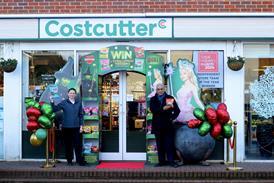











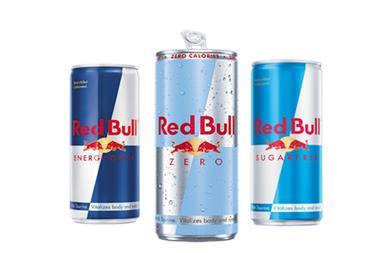

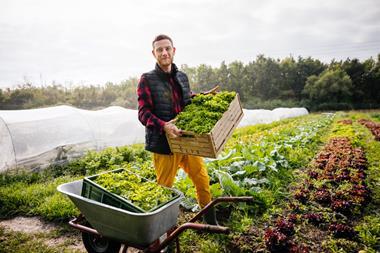
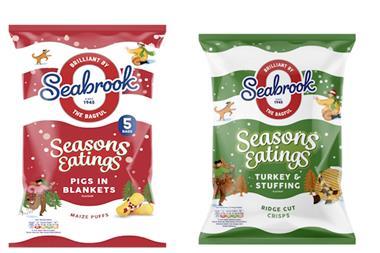
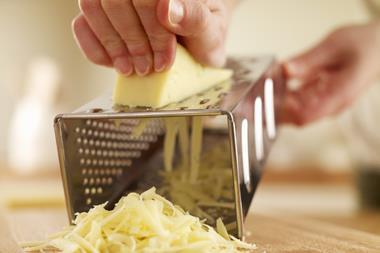







No comments yet